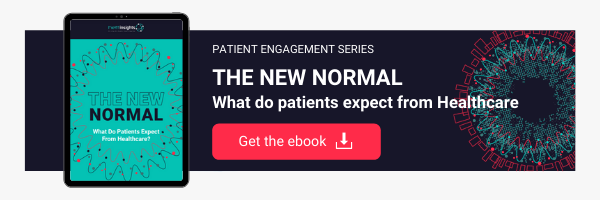The COVID-19 pandemic has completely transformed patient care. As you would expect, to ensure the safety of both patients and staff, changes have been made at great pace to respond to fast-changing circumstances.
These changes have only been possible thanks to technological advancements the healthcare industry had been previously slow to adopt.
But how have patients responded to these technological changes and are they here to stay?
What Has Changed for Patients?
The pandemic and subsequent social distancing rules have resulted in a greater reliance on digital alternatives. It is far safer for a primary care provider to meet with their patient virtually than in person.
The fewer patients who actually have to physically visit their GP, the lower the risk of the virus passing from person to person. To make this a reality, GPs made the switch to online and video consultations.
This means patients can speak to their GP from the comfort of their own home which, for many, removes the possible stress of a visit. There are obvious limitations to carrying out an examination virtually but thanks to the technology available, GPs can obtain a lot of vital information.
In fact, some patients feel an even greater connection to their GPs despite the change of environment. Video calls give the patient the feeling of a direct line to their GP, something that can often feel difficult when dealing with those responsible for organising appointments.
Following a video consultation in April 2020, Fran, a patient advocate, said:
“The Audiologist had not done a video call before and… we had a lot of fun, discovering that professional/patient exchange, empathy and partnership can be done easily across a screen. Particularly for me who did not have to travel to hospital and could enjoy a cup of good coffee in my own home.”
For many patients, this is a fantastic development and a continuation of the digital advances they have enjoyed in other areas of their lives. Banking, shopping and communicating are just some of the possibilities today’s smartphones provide.
The same is true of health. There are countless health apps that allow the user to count steps, measure blood pressure, count calories and even monitor sleep patterns. Why should they not also be able to speak to their GP in the same way?
Potential Issues for Some Patients
In a recent webinar, Professor Trisha Greenhalgh (University of Oxford) and Dr Minal Bakhai (NHS England & NHS Improvement) discussed the challenges the switch to digital alternatives has created.
They outlined that online and video consultations are only successful if the technology itself is dependable. As soon as there is a poor connection or technical difficulties, attitudes towards online consultations can shift.
A reliable internet connection, clear picture and coherent audio are all must-haves. This just is not the case for many patients. Some are in tough economic situations that mean they simply don’t have the funds for the equipment and internet connection that’s required to access digital healthcare.
Plus, particular demographics are not as tech-savvy as others and might not even know where to start. In fact, Trisha Greenhalgh suggested a download or installation of any kind can be enough to put two-thirds of some groups off.
Although these challenges are not faced by all patients, they do need to be addressed if digital alternatives to traditional appointments are going to become the standard in other areas of care post-COVID.
There have been teething problems even before the pandemic. Max Clarke, a patient from Use My Data who works with adults with learning disabilities and autism, talked about accessing his personal health record (PHR) and the experience surrounding it.
“I’ve accessed my GP record through SystmOne. It was a complex process to access my ‘account’, it was not laid out properly structurally, but once logged in all the information is there. I mainly used to access and order a prescription.”
There might be some obstacles ahead, including wider implementation and changing workflows, but it is clear that healthcare has changed irreversibly thanks to the pandemic. An increasingly digital world, coupled with the recent rapid changes, means patient expectations are changing.
They want to be more involved in their own healthcare and expect to utilise the latest technology to do so. The issue boils down to one question - if we are already providing some services in this way, why go back to old models once we are out of the pandemic?
The attempt to identify the ‘new normal’ and prepare for a future that includes digital healthcare access as a common expectation and reality. Our eBook 'The New Normal: What do Patients Expect from Healthcare?' delves deeper into the challenges and perspectives of patients and digital health care.
What Do Patients Expect From Healthcare Post-COVID?
In this eBook, we talk to both patients and digital health specialists to try and understand how services might need to change in the future to accommodate evolving patient demands. The pandemic has focused a lot of minds and people are more interested than ever in their healthcare.
This changing mindset is also fuelled by technological improvements that are making our lives easier in so many ways. To not look to uses within healthcare would be a mistake. Download the free eBook now for more insight and discussion on patient data, digital services and what the future might look like.
%20(1).png?width=500&height=58&name=HETT%20insights%20logo%20RGB-04%20(1)%20(1).png)


.png)
